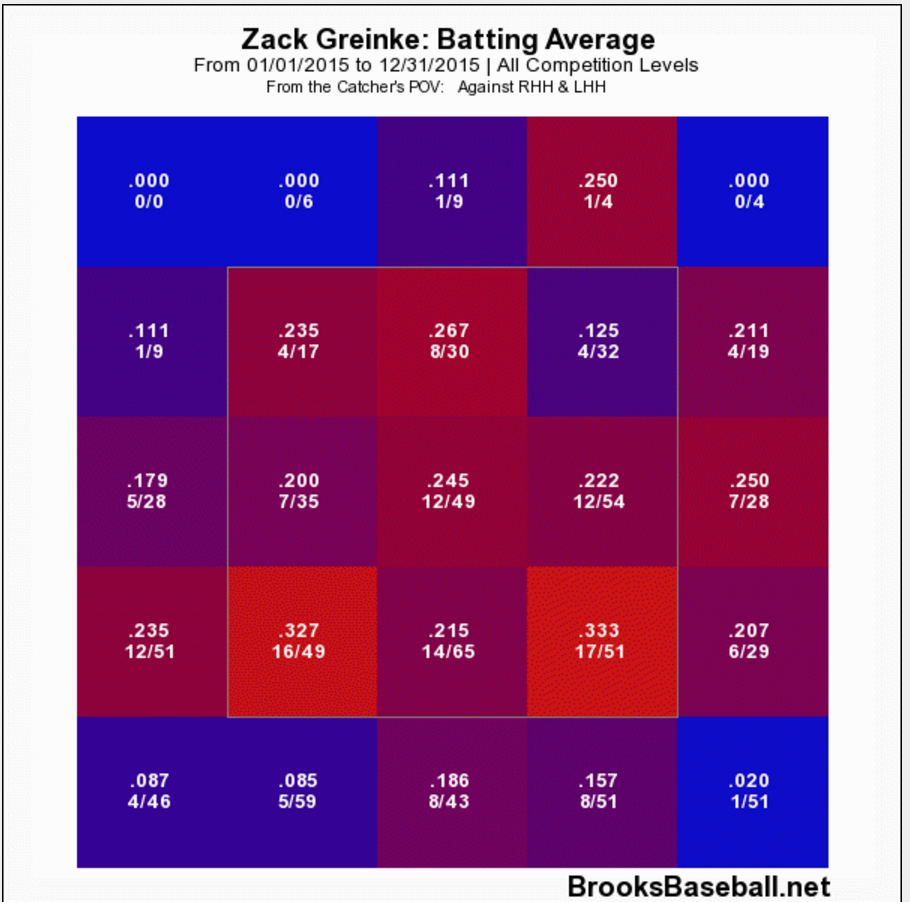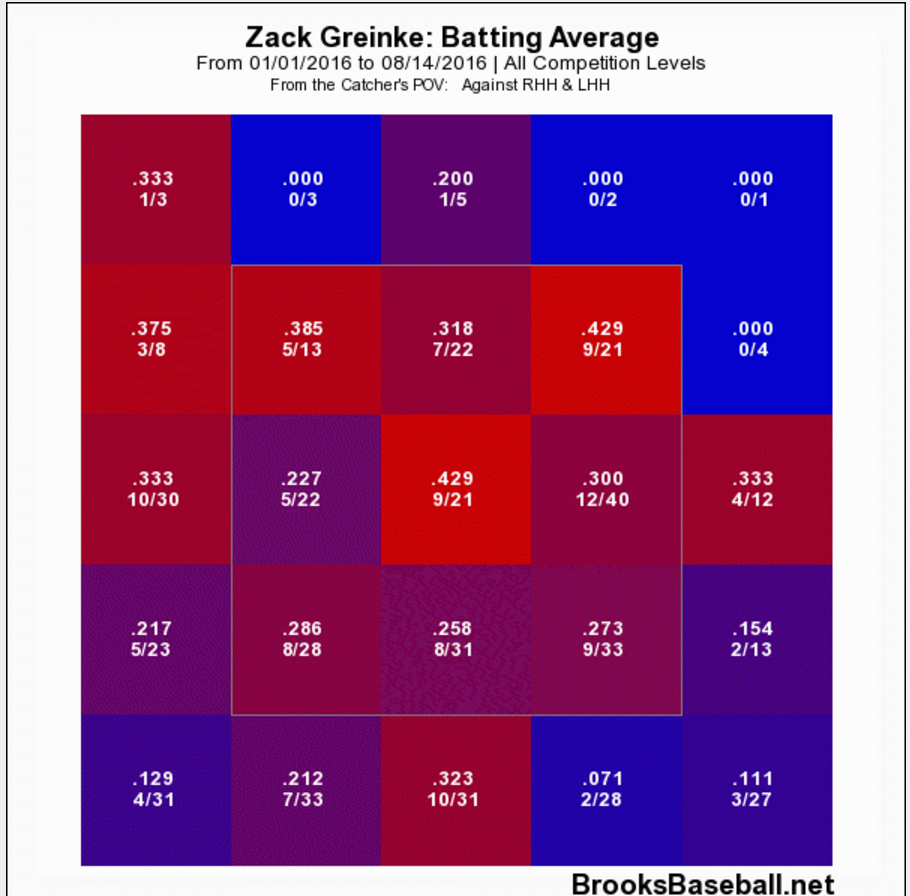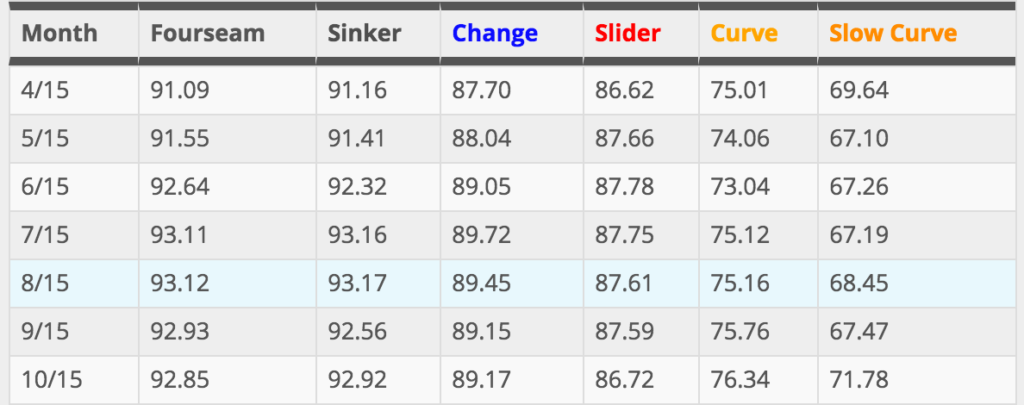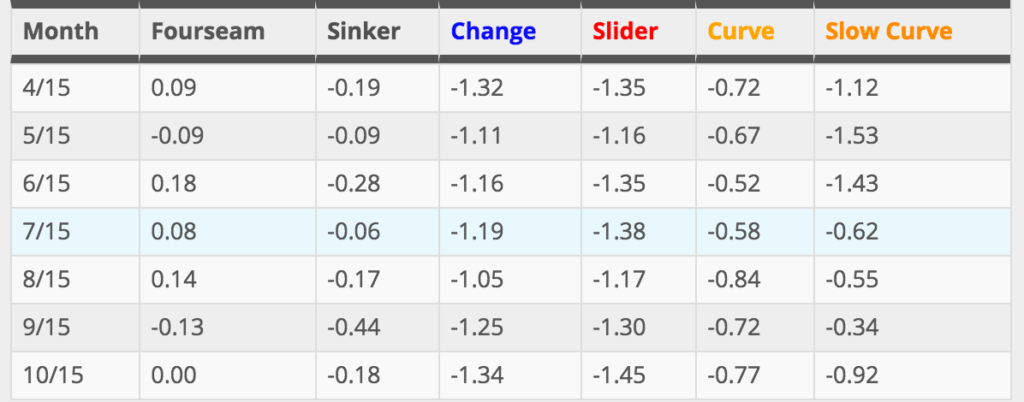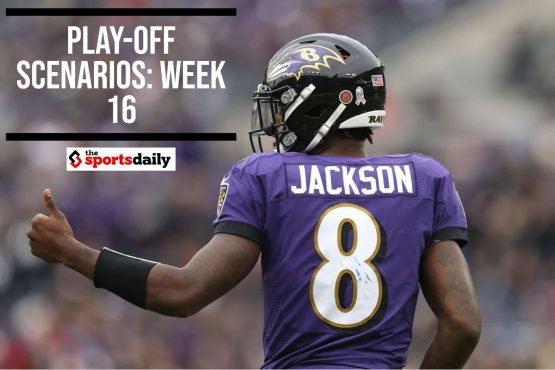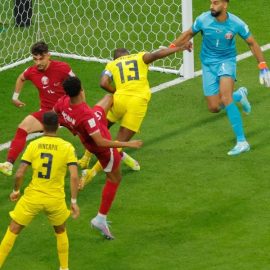This winter, the Arizona Diamondbacks paid reigning Cy Young runner up and top 7 MVP finisher Zack Greinke $206 million to leave Los Angeles and come to the desert. Greinke was supposed to be the big piece needed to push Arizona over the top and into playoff and even World Series contention.
It hasn’t worked out like that. Arizona is 48-69 (dead last place in the NL West), and Greinke is on pace for his worst season in a decade. After Sunday’s drubbing, in which Greinke surrendered 9 earned runs on 10 hits in 1.2 innings, the numbers aren’t good: 11-4 with a 4.31 ERA. The 56 earned runs he’s given up so far this year already exceed the 41 he gave up in 2015, while en route to a league leading 1.66 ERA.
Greinke has been good, but not consistently so, and not nearly as good as he was least year. Why?
First let’s take a look a the results. Below is Greinke’s hot-cold chart for 2015, the year he posted a 19-3 record with that 1.66 ERA, league leading 0.84 WHIP, league leading 222 ERA+, and 200 strikeouts against 148 hits allowed:
Here’s 2016, which has been worse in every way:
Greinke’s numbers in the zone have been much worse, particularly up in zone. On pitches right down the middle, 2015 batters hit just .245 but 2016 batters are hitting over .400. On pitches up and in to right handers, 2015 guys hit .125 while 2016 guys are hitting over .400. On pitches up and in to left handed hitters, 2015 batters hit .235 and 2016 batters are hitting .385.
Of course, at first blush, it sort of seems like luck that Greinke would only surrender a .245 average on pitches down the middle in 2015. But let’s dig deeper, as we do here at OTB, and take a look at the actual pitches resulting in those elevated 2016 numbers. Something must have made Greinke harder to hit in 2015 than 2016, regardless of the location the ball was thrown.
Here’s Greinke’s average velocity by pitch type for 2015:
Here’s 2016:
A couple things immediately jump out. First, fastballs, sinkers, changeups, and sliders were a little faster in 2015. Greinke was generally throwing harder, though not by very much. Second, curveballs were slower last season. And third, Greinke threw his slow curve more consistently in 2015. In fact, it looks like he hasn’t thrown one at all since May.
If you add all that together, you get a 2015 pitcher with faster fast pitches and slower slow pitches. 2015 Greinke had a greater velocity difference between his pitches and kept hitters off balance. Moreover, he mixed in the super slow curve more often, giving hitters yet another thing they had to keep an eye on.
In 2016, the fast stuff isn’t quite as fast, the slow stuff isn’t quite as slow, and the super slow stuff doesn’t really exist. Everything is kind of bunched into this one zone of 80-90 mph, give or take. the question is: Does that sufficiently account for the radical shift in results?
Let’s keep digging, and take a look at Greinke’s vertical pitch locations last year vs. this one.
Here’s 2015:
Here they are for 2016:
Look at the columns for sinker and curveball. Greinke is missing his spots. Last season, he was changing speeds and hitting his target. This season, Greinke is throwing all his pitches at more similar speed and he’s missing more often. A lot more often on his curveballs and sinkers.
In summary: Because his velocity is down on fastballs and up on changeups, the slow curve is missing from his arsenal, and his location is off, batters in 2016 can guess wrong on the type of pitch Greinke is throwing, but be close enough to make solid contact, and the ball is more likely to be in the zone.
Improving velocity is the toughest part, but plenty of veteran power pitchers have reinvented themselves with command and savvy. If Greinke can figure out his location issues, a velocity drop of this minimal magnitude should be easy to overcome. If he mixes in his old slow curve, it’ll do a lot of good toward keeping batters off balance.
Improving the pitches you throw may indeed be hard, but throwing pitches you have and are inexplicably not using isn’t. Maybe Greinke can learn from his Fenway debacle on Sunday and improve from here on out. The D’Backs better hope so anyway.
-Max Frankel
Add The Sports Daily to your Google News Feed!

